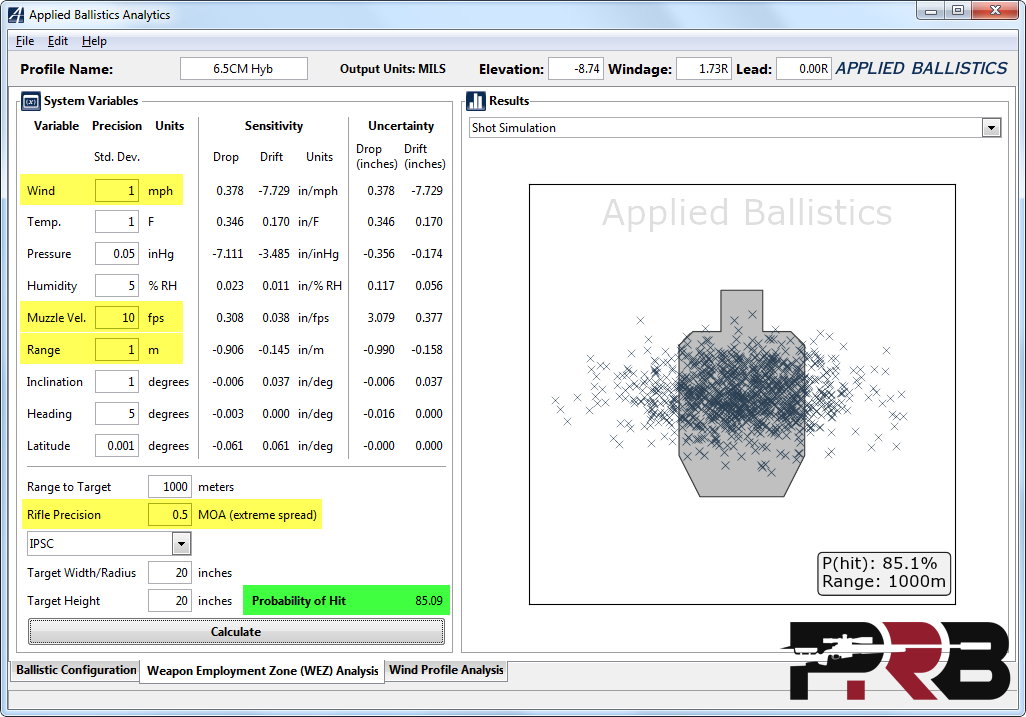I have been reading this thread today (far too much of my life I'll never get back!) I have some thoughts/observations/questions about comments in this thread; but, not necessarily in a way that responds to the original question posed by
@Dthomas3523 . I am not trying to be combative here, just asking the questions as I see them.
To make sure we are all looking at the same glossary of terms people have been using: (according to what people have been saying here and my interpretation of that)
- Velocity Node - a place on the charge vs velocity graph that is flatter than the general slope of the trend line (where changes in charge weight have less effect on velocity)
- Positive Compensation - according to Bryan Litz, "Positive compensation is when a rifle/load produces a condition in which the faster than average bullets are exiting the muzzle when it's at the bottom of its up-and-down vibration pattern (or when it's traveling down), and the slower than average bullets are exiting the muzzle when it's at the top if it's cycle (or moving up). In other words, the system is self-correcting in the sense that faster bullets are essentially pointed lower. "
- Seating depth tuning - changing seating depth to change how small the rifle will group at a given charge weight (I assume this is basically changing when the bullet leaves the barrel relative to muzzle movement from stress waves traveling in the barrel)
- Barrel tuner tuning - moving a mass at the end of the barrel to change the muzzle movement for a given bullet seating and charge weigh. I.E. bullet arrives when it arrives and tuner makes sure barrel is moving as little as possible by altering the macro harmonic behavior of the barrel.
- Charge weight tuning general - for a given seating depth, change the charge weight and see what groups the smallest
- Charge weight tuning for vertical dispersion - try and find a charge weight that produces less vertical dispersion (could be positive compensation or just small SD and ES of muzzle velocity)
- Optimal Seating Depth for secant ogive VLD bullets - The seating depth that produces the smallest groups, something that these types of bullets tend to be sensitive to. Not talked about here really but something I want to touch on.
Thoughts/Comments/Questions:
- If you can measure your MV with a good chrono over say 10-15 rounds and your SD and ES meet a standard that will result in a small enough vertical dispersion at your intended target range, positive compensation can't help you. If it is happening and it isn't going to make any difference if you already have low vertical dispersion. Furthermore, even if it was helping you the effect would only be right at one distance and would then diverge again. As such, if you can achieve sufficient MV consistency there is little to no point in bothering with trying to test and find the ideal positive compensation effect.
- You could assess how consistent your loads are in terms of vertical dispersion without a chrono, by looking at vertical dispersion on target at a range that is far enough for it to develop. But why would you unless you don't have a decent chrono? Using a chrono with and accuracy of a couple FPS is going to introduce less uncertainty into your test than you will as the shooter if you are going by vertical group size on paper. Furthermore, the vertical dispersion you see will also be partly do to the general group size the gun is capable of, not just the difference in MV.
- I have yet to hear a logical and physical explanation that hypothesizes why a given step size in charge weight could produce a different change in velocity depending on exactly where you were on the "ladder" of charge weights you are testing. Have I missed this explanation somewhere? I.E. other that random variation why would an additional 0.3 grain not result in the same increase in velocity when going from 40.1 to 40.4 and when going from 42.1 to 42.4? My assumption is that if you had a barrel that was at say 250 rounds and you did the .3 grain step charge process, but you did it with 15+ rounds at each charge weight, firing one at each charge weight and then going back to start (barrel cooled to same temp each time), when you graphed the results there would not be any "velocity node" visible.
- If seating depth tuning for good groups is about getting the bullet to leave the barrel at the "right" time relative to dynamic muzzle movement, why are some bullets more sensitive that others? I.E. why would changing the seating depth on a secant ogive VLD bullets effect the time the bullets leaves the muzzle more than a hybrid?
- If a tuner can be used to good the job of seat depth testing, can it be used to tune a sensitive secant ogive VLD bullets that aren't at the "optimum" seating depth? Or are there two different effects taking place here that aren't the same for the to types of bullets?
- If secant ogive VLD bullets do have something else going on with seating depth that can't be fixed with a tuner, what are you actually doing when you get them to group well, if it isn't about timing and muzzle movement? (things a tuner can agedly fix)
- If we assume that any of the charge weights are sufficient, and if we assume that changing seating depth is basically changing when the bullet leaves the barrel to the optimum time, couldn't we also choose a nominal seating depth and then change the charge weight in small increments to "tune" when the bullet leaves the barrel and thus produce small groups? Then pick the charge weight the groups smallest and proceed?


